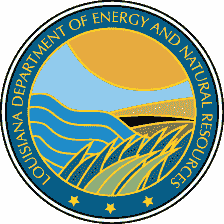Oilfield Restoration Commission
DNR RELEASES OILFIELD WASTE REPORT
Commissioner of Conservation Philip N. Asprodites today released a study and final report by LSU scientists, characterizing the state’s oilfield exploration and production (E&P) waste for both heavy metals and volatile organic constituents. The report entitled, “TCLP Characterization of Exploration and Production Wastes in Louisiana” was submitted to Department of Natural Resources and Office of Conservation officials to complete Phase 1 of evaluating E&P wastes.
Authors of the 52-page report are Danny D. Reible and K.T. Valsaraj of the LSU Hazardous Substance Research Center, with project coordination by LSU chemistry professor and former vice chancellor James H. Wharton.
Department of Natural Resources Secretary Jack Caldwell said, “I am pleased with the quality of the report and ready to follow the next important course of action.” Commissioner Asprodites added, “this is a key element in the overall plan to evaluate E&P waste and now Conservation staff are carefully reviewing these findings that will lead us to drafting the new Statewide rules.”
The LSU report concludes that 99.3% of the validated waste samples indicate values below hazardous waste levels set by EPA for each of the eight heavy metal constituents tested (arsenic, barium, chromium, cadmium, lead, mercury, selenium and silver). No waste types exhibited a geometric mean, or most likely concentration, exceeding the federal standard for metals. In addition, the report shows that 94.5% of the volume of E&P waste received by Louisiana’s commercial facilities in 1998 would exhibit a geometric mean concentration of less than EPA’s reference level for benzene.
LSU also identified four E&P waste types, representing 3.2% of the total E&P waste received by Louisiana’s commercial waste facilities during 1998, that were shown to have geometric mean concentrations above the EPA reference concentration level for benzene. These waste types are generally referred to as “associated waste” and are the same waste types that the U.S. Environmental Protection Agency identified in 1987 as part of their nationwide assessment of E&P waste. The report also indicates, should a risk assessment show that current handling of “associated” waste types involve potential risk, then special handling or treatment may be necessary. Steps that would need to be taken could vary from tracking the wastes to insure they are not concentrated in a single cell or land treatment facility to specific treatment of the waste. According to Professor Reible, “we feel that LSU has provided a strong basis for evaluating the potential risks of the various E&P waste types.”
Commissioner Asprodites said that with this report, Phase 1 of DNR’s plan is concluded. Phases 2 and 3 will be conducted by DNR’s contract toxicologist who will confirm the validation process and conduct a health risk analysis of the various waste types, which will be used in promulgating changes to Statewide Order No. 29-B. The toxicological evaluation is expected to be completed in three to four months, with a final rule to follow.
DNR’s Office of Conservation has released this report on the Internet on the department’s homepage at www.dnr.state.la.us.
View the "TCLP Characterization of Exploration and Production Wastes in Louisiana” report
(Adobe Acrobat 3 format)
Read related news story in New Orleans City Business Online
News Archives »
